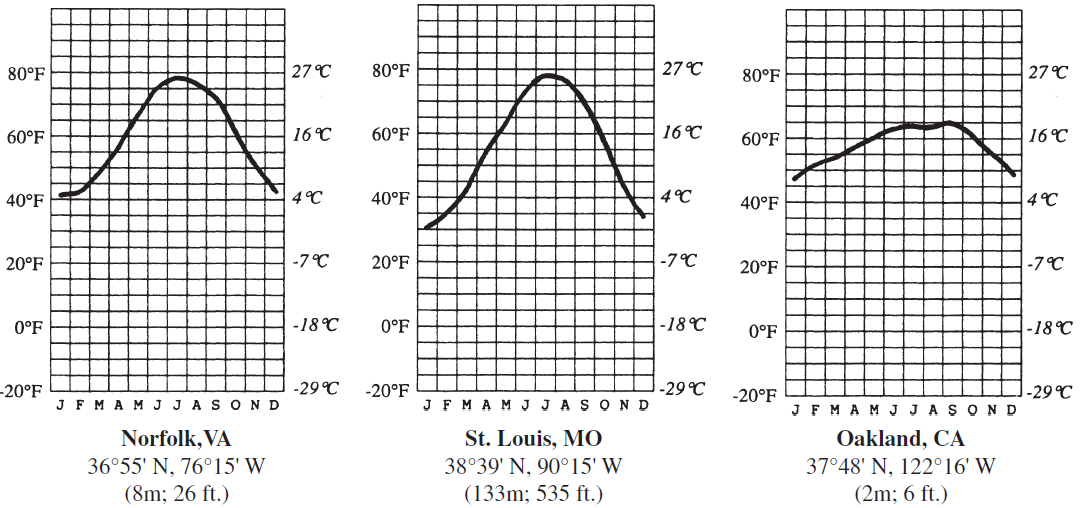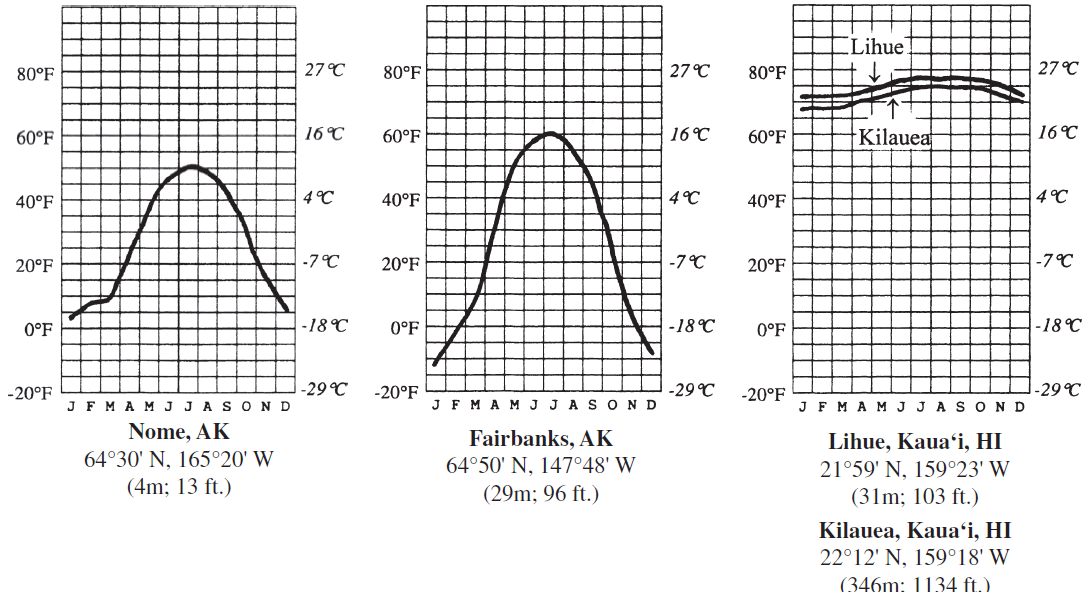Which of the following is true regarding the amount of liquid freshwater at Earth's surface?
A) Lakes, rivers, and swamps contain 0.3 percent of the world's fresh water supply.
B) Freshwater resources contain 11.02% of the world's fresh water supplies.
C) Combined, freshwater sources contain the majority of the world's freshwater.
D) The amount of the world's fresh water in rivers and streams is greater than that in the atmosphere.
E) Of freshwater supplies in lakes, rivers, and swamps, rivers contain the greatest amount of freshwater.
A
You might also like to view...
Why is the warmest month of summer different in St. Louis and Oakland?
Six charts showing the average monthly temperature (in °C and °F) for seven U.S. cities are provided (the first letter of each month of the year is shown along the bottom of the charts). For each of the cities, the latitude and longitude, as well as the elevation, are provided.


Answer the question by comparing the temperature charts. In your answers, consider the one temperature control factor that is most responsible for the patterns shown (choose from latitude, land–water contrasts, wind patterns, or altitude). You may use the same answer for more than one question. You should locate each of the cities on a world map before trying to answer the question. If altitude is the main factor cited, calculate the expected temperature difference between the two cities based on the average lapse rate.
Which of the following is NOT an environment in which an igneous rock forms?
A. cooling and solidification of lava B. explosive eruption of volcanic ash C. intense squeezing from tectonic forces D. solidification of magma at depth E. All of these are environments that form igneous rock.
Chipmunks and flying squirrels competing for truffles is an example of ________
A) interspecific competition B) exploitation competition C) interference competition D) intraspecific competition E) habitat competition
When an occlusion occurs
A. the cold front overtakes the warm front and the warmer air is lifted from the surface. B. the warm front overtakes the cold front and the warmer air is lifted from the surface. C. the warm front overtakes the cold front and the colder air is lifted from the surface. D. the cold front overtakes the warm front and the colder air is lifted from the surface.